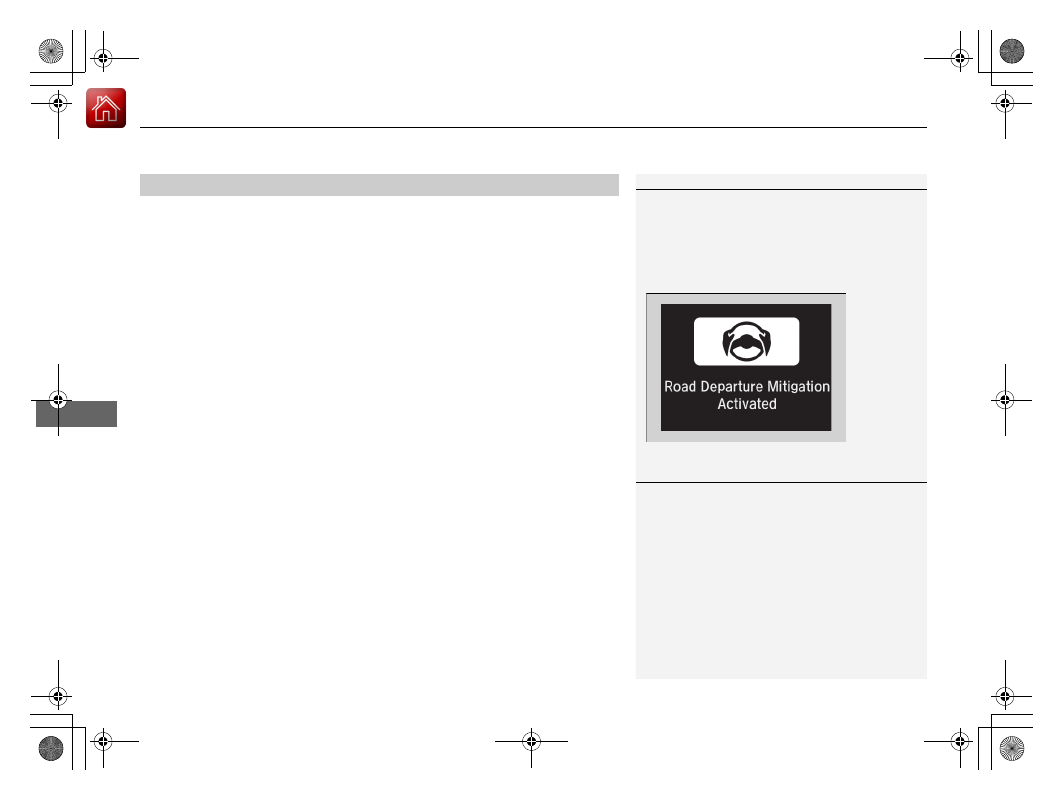Honda Accord Hybrid (2019 year). Manual - part 34

uu
Honda Sensing®
u
Road Departure Mitigation (RDM) System
528
Driving
The system becomes ready to start searching for lane markings when all the
following conditions are met:
• The vehicle is traveling between about 45 and 90 mph (72 and 145 km/h).
• The vehicle is on a straight or slightly curved road.
• The turn signals are off.
• The brake pedal is not depressed.
• The wipers are not in continuous operation.
• The vehicle is not accelerating or braking, and the steering wheel is not being
turned.
• The system makes a determination that the driver is not actively accelerating,
braking or steering.
■
How the System Activates
1
Road Departure Mitigation (RDM) System
If LKAS is off and you have selected Narrow from the
customized options using the audio/information
screen, the message below will appear in case the
system determines a possibility of your vehicle
crossing over detected lane markings.
2 Customized Features P. 367, 378
1
The RDM system may automatically shut off and the
safety support indicator (amber) comes and stays on.
2 Indicators P. 82
RDM system function can be impacted when the
vehicle is:
•
Not driven within a traffic lane.
•
Driven on the inside edge of a curve, or outside of
a lane.
•
Driven in a narrow lane.